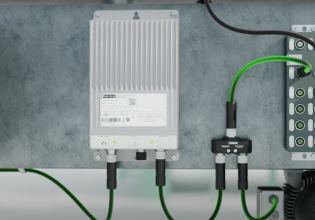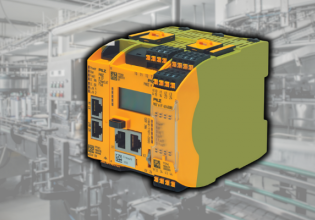What is a Warehouse Management System?
Learn about the basic components of a warehouse management system and some of the modules used to automate warehouse operations.
A Warehouse Management System (WMS) is software used to streamline warehouse operations. The WMS tracks the movement of items entering and exiting the warehouse. It keeps an eye on inventory and automatically generates orders to fill inventory requirements. Advanced versions of a WMS can also be used in modern shipping methods.
Basic Components of a Warehouse Management System
A WMS is divided into several components to make it more manageable. The following are some important components of a warehouse management system.

A smart warehouse management system used to identify package picking and delivery.
Inventory Management Module
The inventory management module keeps track of stock items and is responsible for maintaining the minimum level. If the inventory items go below a minimum threshold level, it automatically initiates orders in advance. The delivery activities are also managed through it.
This module generates orders for the production department, and they use these orders to plan their production activities.
Goods Receipt Module
A goods receipt module is responsible for managing all activities necessary for goods receipt in the warehouse, including the following:
- Space allocation
- Item identification through labels
- Having proper records in the system and responsible person/department
- Special instructions for critical requirements such as temperature-sensitive products
All these functions are performed through the system without any manual intervention. The goods receipt module is responsible for arranging resources, such as lifters and carriers in goods. This module also helps to prevent the mingling of different items with each other. Production planning is highly dependent on this module by having vital information and data about available capacity.
Order Fulfillment Module
The order fulfillment module is essential, as its success affects the warehouse management system’s overall performance. This module activates as soon as items have been received in a warehouse until items leave the warehouse.
Order processing is executed in this module, which means the order gets processed without any error and reaches the correct recipients. It also fulfills standard packaging requirements, for example, ensuring low-temperature requirements in case of temperature-sensitive products. Documentation such as purchase orders is also managed through this module.
Logistics are planned for effective and timely delivery of supplies. This module facilitates logistics tracking by both sender and receiver.
Shipping Module
In this module, shipping arrangements are made, such as packing and picking from the warehouse and work closely with all warehouse functions and departments. Commercial documentation such as invoices is handled under this module.
All in One Package
The warehouse management systems should include all supporting functions, as mentioned above. The systems need to be capable enough to handle all relevant functions of warehouse operations.
Adding and purchasing additional modules or functionality is not ideal and may not be effective. It increases cost, as compared to purchasing a complete software system in the beginning. Also, there are integration problems for additional modules with the parent WMS, such as version mismatch between the main WMS and additional modules.
Easy Integration with the Existing Systems
A warehouse management system should easily integrate with the existing systems or software already in place, such as the enterprise resource planning (ERP) system. This ensures a WMS is utilized and enables it to adapt to the organization’s ecosystem.

An autonomous mobile robot (AMR) transporting boxes in a warehouse. Image used courtesy of Fetch Robotics
The integration allows for resource sharing and a combined solution to a problem.
Ease of Operation
The warehouse management system should be easy to operate without requiring any specialized expertise or software technique.
The basic interface, login, and logout procedures of a warehouse management system should be straightforward. The WMS should update security features without hindering routine tasks. The report generation should be timely, correct, and done without human intervention. Data entry and process parameters display should be accessible and readable without requiring any technical expertise. Different alerts and alarms should be communicated and managed with clear instructions.
Fulfilling Future Requirement
The warehouse management system should be scalable to the organization’s requirements. If a company grows or increases its function, the WMS systems and applications should manage the warehouse.
The Difference Between WMS and Computerized Maintenance Management System (CMMS)
It has become a new norm for companies to implement separate solutions for every process or department in a facility. The same is true for computerized maintenance management systems and warehouse management systems. There are many differences between these systems. Some of these differences are consolidated below.
Area of Application
A WMS is meant for inventory-related activities, from goods incoming, proper handling and storing, and at the end, dispatching to the required party. The CMMS is used to streamlining the factory’s maintenance activities to avoid machine breakdown and ensure smooth production activities.

An ABB robot working in a warehouse facility with a warehouse management system. Image used courtesy of ABB
Responsibility
A CMMS is responsible for the production and engineering departments. The WMS, on the other hand, is managed by the supply chain department.
Reports
In WMS, the reports are generated to represent a status at a particular stage. For example, it can indicate whether the goods have been dispatched from the warehouse or if it's pending receiving at the warehouse. While in CMMS, reports indicate machine breakdown, total productivity output, the status of different maintenance activities, or provides information about future maintenance planning.
The WMS is an important element of an organization’s structure and makes it possible for humans to manage and control goods and dispatching operations.






